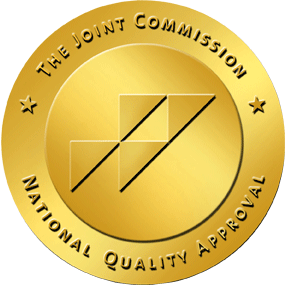It’s no surprise to hear how exercise can improve many areas of your life. From gaining strength to getting a better night’s sleep, the benefits of exercise carry across all systems of the body.
But did you know exercise can actually alter and improve brain function?
We call this neuroplasticity, and it’s how we change our thought processes and behaviors when developing new habits. You can change brain structure in several ways-not just through exercise. It can happen when learning a new language or solving a complex math problem. It can also happen while adapting not so great behaviors, like compulsive spending or drug and alcohol addiction.
The good news is our brains aren’t in a fixed or static state but plastic and flexible and able to change. Just as the brain can change in response to drug or alcohol use, it can also change when forming healthy new habits, such as exercise.
During recovery, exercise not only can tone the body, but can help improve mood, boost natural feel-good chemicals, forge positive relationships with others (and self!), and reinforce positive behaviors. These types of rewards feel good and offer incentive to keep at it.
Here we’ll cover how exercise, in combination with other treatment options such as individual and group counseling and Cognitive-Behavioral Therapy (CBT), can help improve outcomes during recovery and ways to integrate physical activity into day to day living.
Exercise for Addiction Recovery
Creating structure is an essential part of the recovery process. With intention and purpose, you can structure the day and limit distractions such as feeling bored, lonely, or restless-which can prove a horrible combination while in recovery.
When structuring the day, exercise is a beneficial component to add to the routine, and there are several ways you can go about it. Whether it’s a solo hike or run off the beaten path or showing up for a group yoga or spin class, there are a number of ways you can develop daily exercise into a healthy habit and hobby.
Group Exercise for Addiction Recovery
Physical activity with others can enhance long-term abstinence and build a social circle of like-minded people. Exercise groups, classes, and even adult sport teams can help relieve stress, build a sense of belonging, and improve overall wellness.
Working out and training with others builds a sense of accountability. During the early days of recovery, this can add a layer of the support needed during this time.
Group exercise during addiction recovery has been shown an effective tool to include in a treatment plan. At Pura Vida Recovery, we consider recreational therapy an essential part of sober living. Through activities such as wake boarding and rock climbing, our clients not only build physical strength but immeasurable inner strength that can carry through recovery.
Solo Exercise for Addiction Recovery
Physical activity with a group is not always a possibility, but that doesn’t mean it can’t offer the same benefits. When going at it alone, it may help to plan exercise at a regularly scheduled time each day. This takes us back to structure, and with a structured routine, you can stay busy, have purpose, and look forward to new activities. So, when planning your routine, include a period of physical activity at a time that works best for you.
Do you have a furry companion or know someone else who does? They’d love to join you for a daily walk or run! Hiking, swimming, jogging, and even at home workout routines are also a great way to begin a new exercise regime. Include a mix of cardio and resistance training. This can help build strength, and cardio exercise has been shown to improve memory and reduce cravings.
Make a goal to stay active for at least 30 minutes each day. In the beginning, this may be a challenge. Take it easy on yourself and push a little further each day. It doesn’t matter so much where you begin, just take the first step, skip, or leap! Your body and mind will thank you in no time.
Mindfulness Exercise
Probably not the first thing that comes to mind when thinking about exercise, but mindfulness exercise has shown to have many positive effects for addiction treatment, including improved decision-making skills, concentration, self-control. Mindfulness may not be the heart pumping kind of exercise you have in mind, but it can offer several of the same benefits during the early and later stages of recovery.
The practice of mindfulness can help reduce the ‘lizard brain response’-a type of automatic thinking with not much regard for consequences. With regular daily practice, mindfulness techniques are found to help with emotion regulation and attention. Automatic thoughts and reactions become observable and can help replace habitual, reactive thought with self-regulation and acceptance.
There are several ways you can begin mindfulness exercise and no special equipment required. Choose a time of day where you can sustain concentration and focus, even if for only 10 minutes. Increase the minutes as you go and in time, you can achieve better awareness.
Addiction Recovery with Pura Vida Rehab Center in Santa Rosa
When combined with evidence-based treatment therapies, such as Cognitive-Behavioral Therapy (CBT), physical exercise has been shown as a promising addition to help those in recovery from alcohol and drug addiction. And while physical activity within a group setting can offer an added layer of accountability, exercise, when done individually, can still provide numerous advantages when part of an alcohol or drug addiction treatment plan.
At Pura Vida, our clinical staff takes a holistic approach to helping men and women overcome drug and alcohol addiction. With evidence-based day treatment programs and structured Sober Living housing, we offer clients a supportive community as they progress towards finding JOY in life.
For a confidential assessment or to learn more about our treatment programs and Sober Living community, we invite you to reach out through our contact page or by phone.





